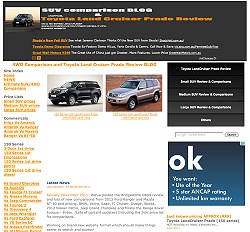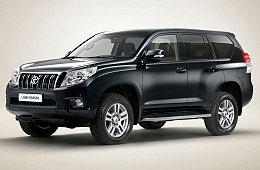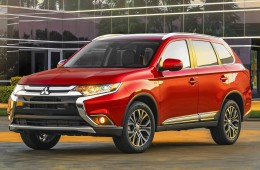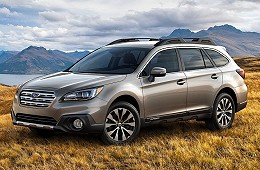|
|
VS |
|
Welcome to the new Subaru Outback Vs Mitsubishi Outlander comparison for 2019. The Outlander is the forgotten SUV in the market and it is easy to understand why. The main reason that the Outlander has anonymous looks and pricing. The Outlander can’t even compete with the older and smaller ASX. On the other hand the Outback has some brand cachet via marketing and being relatively unique in the class by being literally a high rise wagon. Regardless overlapping prices means that they are worth a comparison.
Subaru Outback Vs Mitsubishi Outlander exterior comparison: The Outlander looks like a contemporary design but it is very conservative or boring. It’s also one of the oldest designs in the small to medium sized SUV class. The front end is quite nice though but not nice enough. It is also a ‘thin’ looking SUV… The range features nice alloys wheel that come with all models and surprisingly nice colour choices that make it appear more upmarket. The Outback in comparison, is equally conservative but the uglified front end like all the current generation Subaru’s is up to personal taste. It’s colour choice are also quite conservative. It is also the ‘thin’ SUV.
Subaru Outback Vs Mitsubishi Outlander interior comparison: The Outlander’s interior design and materials is like the outside, conservative and not quite up to 2019 standards. It’s OK to be in but not at the asking price. There is enough space for people and cargo with a nice seating position. In comparison, the Outback interior is a nicer place to be in but more car like. Nice materials but boring design. While it may appear ‘thin’ on the outside there is plenty of space between the seats. At least it feels more modern than the Outlander.
Subaru Outback Vs Mitsubishi Outlander engines and technology: Both have similar safety system dependent on model grade but their engine choices are different. In both models, both use the class standard 2.4 litre petrol with the option of a turbo diesel but the Outback has the ‘traditional F6 cylinder engine while the Outlander has the technically advanced PHEV version or partially electric drivetrain. This is the the only tech feature that rivals the class leading RAV4. The only problem with the Outlander PHEV is the small battery only range which makes more a Hybrid than genuine electric car. But if you are only driving a short distance say under 50kms a days and charging it every night you won’t need to visit a petrol station very often. The petrol engine can still be used to drive the Outlander so range anxiety is not a problem.
In conclusion and winner to the Subaru Outback Vs Mitsubishi Outlander comparison is the Outlander. As you can tell there is not much to say about the Outlander. It’s a very boring model in a class with only one feature that makes it a winner. As you can guess that is the electric drivetrain option. It’s the most affordable electric car or SUV despite it’s major flaw in the tiny electric only range. Even the price is predictable. The Subaru Outback can be described in similar terms, it’s a commuter with perceived off road capability by having a raised ride height. They even look very similar.
| Mitsubishi Outlander | Subaru Outback |
 |
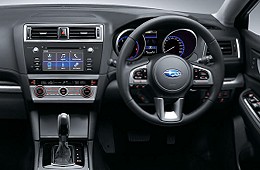 |
| Engines | |
| 4B11 + PHEV IL4 Petrol + Electric motors 2.0 Litre (1995cc) Unleaded Claimed 87Kw @ 4500RPM Claimed 186Nm @ 4500RPM Electric motors x2 120Kw & 332Nm |
IL4 Cylinder Petrol DOHC 16 Valve VVT 2.5 Litre (2459cc) Claimed 129Kw @ 5800 RPM Claimed 235Nm @ 4000 RPM |
| 22 series engine IL4 Turbo Diesel 2.2 Litre (2195cc) Claimed 110Kw @ 3500RPM Claimed 360Nm @ 2750RPM |
IL4 Cylinder Diesel Turbo DI CR 2.0 Litre (1990cc) Claimed 110Kw @ 3600 RPM Claimed 350Nm @ 1600 RPM |
| 24 series engine IL Petrol (91 Octane) DOHC Engine EFI 2.4 Litre (2395cc) Claimed 124Kw @ 6000RPM Claimed 220Nm @ 4200RPM |
F6 Cylinder Petrol DOHC 16 Valve 3.6 Litre (3590cc) Claimed 191Kw @ 6000 RPM Claimed 350Nm @ 4400 RPM |
| Weight | |
| Kerb weight FROM 1395Kg Towing capacity up to 1600kg |
Kerb weight FROM 1639Kg Towing capacity up to 1700Kg |
| Fuel capacity & consumption | |
| Up to 45 or 60 litres IL4 2.0 Petrol 6.6 Lts per 100km AVG (CVT) IL4 2.4 Petrol 7.5 Lts per 100km AVG IL4 2.2 Diesel 5.8 Lts per 100km AVG PHEV 1.9 Lts per 100km AVG |
Up to 60 litres IL4 Diesel 5.7 litres per 100km (Auto) F4 Petrol 7.3 litres per 100km (Auto) F6 Petrol 9.9 litres per 100km (Auto) |
| Other specifications | |
| 5 speed manual or CVT Auto Overall height/width 1680/1800 Overall length/wheelbase 4655/2670 4WD system: 2WD or On Demand AWD ANCAP Safety: 5/5 Tyre size: xxx |
CVT Auto Overall height/width 1675/1840 Overall length/wheelbase 4820/2745 NCAP safety rating 5/5 |
| Capability | |
| Angle of: (degrees) Approach xx Departure xx Breakover xx Ground clearance (unloaded) xxxmm Water Fording depth xxmm Max |
Angle of: (degrees) Approach xx Departure xx Breakover xx Min ground clearance xxx mm Water Fording depth xxxmm Max 4WD system: AWD |
| Performance | |
| Pricing | |
| 2018 $28,750 – 55,490 AUD 2014 $28,990 – 52,490 AUD 2013 $28,990 – 45,490 AUD *Always check with the dealer for up to date pricing, specifications, on-road costs, accessories and specials etc.. everything as usual is subject to change! |
2019 $37,440 – 50,440 AUD 2016 $35,990 – 48,490 AUD *Always check with the dealer for up to date pricing, specifications, on-road costs, accessories and specials etc.. everything as usual is subject to change! |

